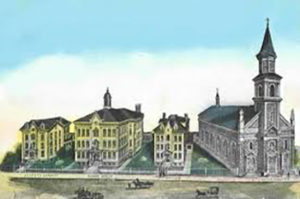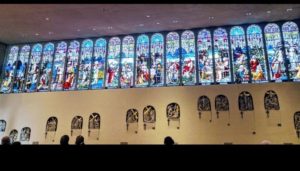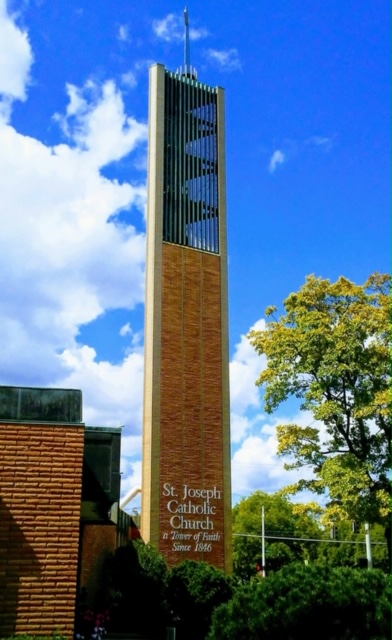In these years, the city of Cincinnati continued its growth in population and industry as parish grew as well. Eventually German families moved from the West End to the suburbs, and African Americans began to replace the white population. The increase of people in the West End changed the face of the community, literally, figuratively, and economically. In 1938, construction was completed on a housing project, Laurel Homes, a complex designed to house low income whites who still resided in the West End community. Concurrently, slum clearance began to disturb more people in urban settings, as the city government made attempts to build adequate housing for black residents. This oversight caused many anxious moments for the city since blacks pressed city council for answers to segregated housing. During the 1940s, obvious racism escalated in Cincinnati fueled by as newspaper articles and instances of segregation.
Despite this tension, St Joseph Church and school continued to flourish and to help the parish along, the parish and school were blessed with pastors and educators who were instrumental to its survival and growth. For example, Father Clement J. Busemeyer, O.F.M. began his term in 1949 as St. Joseph was $60,000 in debt; but through his efforts, he piloted the parish through these dark days to a successful outcome. Father Busemeyer’s great hope was made clear to his superiors and the congregation that “all people were God’s people!” He extended his hand to all in an effort to “set things right,” especially with a race who knew poverty, disruption, and racism firsthand. It was under the patronage of Father Busemeyer that a movement began at St. Joseph that had a great effect on the Roman Catholic Church across the country.
During the early 1960s, urban renewal reared its head and many in the West End were moved from their homes and forced to reside in other areas of town. As streets were widened and expressway access introduced, St. Joseph offered displaced individuals a place they could call home. Many parishioners returned as if nothing was amiss. Even the grand church itself had to be razed and replaced with a smaller version in 1965. Parishioners in this new, unfamiliar facility continued to worship and pray together as a “chosen race,” as everything was changing around them. They adapted beautifully and concentrated on their community of faith.
Yes, St. Joseph continues to serve a community that has undergone many demographic and geographic changes over the past 70 years and faces new ones today. It is the last standing Catholic Church in the community and is a haven for the poor and neglected of the city. It serves African Americans and other races and is a community center for many outreach groups of the community and city. It also attracts to its church and school many individuals outside its parish boundaries. St. Joseph remains the oldest Catholic School in Cincinnati and is the birthplace of African American Catholic music composed by pioneer-artist Father Clarence Rivers. St. Joseph parish has successfully embraced the community in all its many forms. The road was not easy, but through faith, resiliency, and the ability to plan for what might lie ahead, the parish has remained strong and steady.



